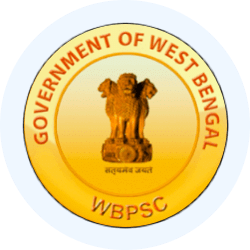WBCS (West Bengal) Exam > WBCS (West Bengal) Notes > WBCS Preparation: All Subjects > Music and Dance of West Bengal - 1
Music and Dance of West Bengal - 1 | WBCS Preparation: All Subjects - WBCS (West Bengal) PDF Download
Dances of West Bengal
West Bengal's dances are globally acclaimed for their diversity, forming an integral part of the state's rich culture alongside its renowned cuisines, music, costumes, and language. The folk dance traditions in West Bengal are particularly noted for their beauty and passion, contributing to the vibrant tapestry of the region's cultural heritage. Each area within the state showcases distinct dance forms, creating a captivating amalgamation of varied styles. This article will provide insights into the six most popular dance forms of West Bengal.
Folk Dances of West Bengal
- Brita Dance
West Bengal, known for its festive culture and artistic charm, is home to various folk music and dance forms. Among these, Brita Dance, also called Vrita Dance, holds a special significance, adding to the cultural richness of the state. - Gambhira Dance
Folk dances in West Bengal, integral to Bengali culture, were initially rooted in agriculture and devotion. Over time, the focus shifted from agricultural to devotional dances, giving rise to the Gambhira Dance. This devotional dance is a prominent feature of Bengal's cultural landscape. - Chhau Dance
Chhau Dance, a renowned tribal martial dance in India, goes by different names in different regions. In West Bengal, it is known as Purulia Chhau, with its origins traced back to the Purulia district. The dance distinguishes itself from its counterparts, offering a unique expression of tribal martial arts. - Santhal Dance
The Santhal tribe, prevalent in West Bengal and Jharkhand, celebrates its rich cultural heritage through music and dance. Devotees of the deity 'Thakurji,' the Santhal tribe expresses its reverence for nature, conveying messages and offering prayers through rhythmic movements to music. - Tusu Dance
West Bengal, known for its cultural diversity, boasts specific folk dances tied to various festivals. The Tusu Dance of Birbhum district, performed during the month of Pausa (December and January), exemplifies this tradition, linking dance and music to the rhythms of festive seasons. - Lathi Dance
Dance serves as a unique form of expression, encapsulating a range of emotions. The Lathi Dance of West Bengal, performed during Muharram, articulates feelings of remorse and anger associated with this Muslim festival. Lathi players showcase their art during the initial ten days of Muharram at various locations, making it a poignant and expressive cultural display.
The document Music and Dance of West Bengal - 1 | WBCS Preparation: All Subjects - WBCS (West Bengal) is a part of the WBCS (West Bengal) Course WBCS Preparation: All Subjects.
All you need of WBCS (West Bengal) at this link: WBCS (West Bengal)
|
75 videos|109 docs
|
FAQs on Music and Dance of West Bengal - 1 - WBCS Preparation: All Subjects - WBCS (West Bengal)
| 1. What are some of the traditional dance forms of West Bengal? |  |
Ans. Some traditional dance forms of West Bengal include Gaudiya Nritya, Manipuri dance, Kathak dance, Odissi dance, and Rabindra Nritya.
| 2. How does Gaudiya Nritya differ from other dance forms in West Bengal? |  |
Ans. Gaudiya Nritya is a classical dance form of West Bengal that is primarily based on the stories and songs of Vaishnavism. It combines elements of classical dance with folk traditions, and its movements are known for their grace and elegance.
| 3. What is the significance of Rabindra Nritya in West Bengal? |  |
Ans. Rabindra Nritya, also known as Tagore dance, is a dance form developed by Rabindranath Tagore. It is based on his songs and poems and is widely performed in cultural events and festivals in West Bengal. It holds great cultural and emotional significance in the region.
| 4. How is music intertwined with dance in West Bengal? |  |
Ans. Music plays a vital role in the dance forms of West Bengal. Traditional instruments like tabla, sitar, harmonium, and flute are used to create the rhythmic and melodic backdrop for the dancers. The dancers sync their movements with the music, creating a harmonious and expressive performance.
| 5. Are there any specific costumes or accessories associated with the traditional dance forms of West Bengal? |  |
Ans. Yes, each traditional dance form in West Bengal has its distinct costumes and accessories. For example, Gaudiya Nritya dancers wear colorful sarees with intricate designs, while Manipuri dancers wear traditional Manipuri costumes and jewelry. These costumes and accessories add to the visual appeal and authenticity of the performances.
Related Searches
















